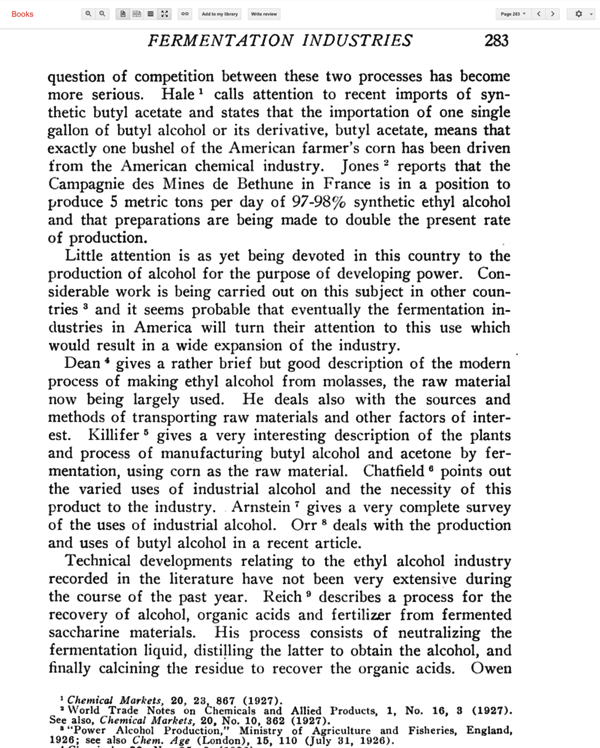Genetic Engineering (Part 2): Cloned Chemical Colonies
TRANSCEND MEMBERS, 29 Aug 2016
Prof. Vandana Shiva – TRANSCEND Media Service
 19 Aug 2016 – The Genetically Engineered Seeds of Doubt failed, while the organic Seeds of Truth germinated beautifully, and were cared for by nature. Nature is looking at a bumper harvest.
19 Aug 2016 – The Genetically Engineered Seeds of Doubt failed, while the organic Seeds of Truth germinated beautifully, and were cared for by nature. Nature is looking at a bumper harvest.
The New Yorker had referred to the Indian Farmer’s skin as “the color of burnt Molasses“. The New Yorker is familiar with Molasses because New York money is stained with it. Each bushel of corn, during the “Great Depression” , was seen by The Chemical Company as a Gallon of butyl alcohol. The Chemical Company’s appetite for raw materials had swiped the right food clean off the people’s plate – their appetite unable to compete with that of the chemical colossus.
Monoculture farming was imposed on the world by the “Elite” to guaranty supply of raw materials to The Chemical Company with. Our farms were colony-sed by the Military Mind of The Chemical Company. The Corn Exchange was established in Cambridge in 1842 to speculate on, and profit from the trade of corn. The Corn Exchange Bank was established in 1853 in New York.
Between 1923 and 1925, together with a number of other New York banks, it held a small stake in the Connecticut-chartered Bank of Central and South America. In 1929 it was renamed the Corn Exchange Bank and Trust Company. In 1954 it merged with Chemical Bank and the combined entity took the name Chemical Corn Exchange Bank. After Chemical Corn merged with New York Trust, the “Corn” was dropped. The Corn Exchange Bank in Philadelphia, Pennsylvania, was famously robbed by Willie Sutton in February 1933.
Acquisition history:
- 1899: Astor Place Bank (founded 1891), Hudson River Bank of the City of New York (founded 1888) and Queens County Bank (founded 1873 as Flushing and Queens County Bank). In 1896 the Astor Place Bank had acquired the Empire State Bank (1888-12/1896).
- 1900: Home Bank (founded 1883).
- 1902: Mechanics & Traders’ Bank of Brooklyn (founded 1867), Eleventh Ward Bank (founded 1867) and Union Square Bank of the City of New York (founded 1889). The Eleventh Ward Bank in 1867 purchased Banking New-York Dry Dock Company.
- 1905: First National Bank of Staten Island at New Brighton (founded 1886).
- 1913: Mount Morris Bank(founded 1881).
- 1914: Washington Trust Company of the City of New York (founded 1889).
- 1928: Stapleton National Bank (founded in 1902).
See also:
- JPMorgan Chase– the successor company
Before J P Morgan Chase and The Chemical Company stole Pensions and Homes from people, by causing the 2008 Global Depression with Options Trading, they were called Chemical Corn (:-s). Chemical Corn merged with The New York Trust Company, and according to the Wikipedia page: { “Corn” was dropped}.
Beginning in 1920 but accelerating in the 1980s and 1990s, Chemical was a leading consolidator of the banking industry in the United States, acquiring Chase Manhattan Bank, Manufacturers Hanover, Texas Commerce Bank and Corn Exchange Bank among others. Following Chemical’s acquisition of Chase, the bank adopted the venerable Chase brand. What had been Chemical Bank is now a foundational component of what today is JPMorgan Chase.
Manufacturers Hanover Corporation is somewhat of a Shape-Shifter:
Timeline of Mergers and Name Changes:
| · 1905 – NYS Chartered Citizens Trust Company of Brooklyn
· 1912 – Broadway Bank of Brooklyn · 1914 – Manufacturers National Bank of Brooklyn · 1914 – Name change to Manufacturers-Citizens Trust Company · 1915 – Name change to Manufacturers Trust Company · 1918 – West Side Bank · 1921 – Ridgewood National Bank · 1922 – North Side Bank of Brooklyn · 1922 – Industrial Bank of New York · 1923 – Columbia Bank · 1925 – Yorkville Bank · 1925 – Gotham National Bank · 1925 – Fifth National Bank of the City of New York · 1927 – Commonwealth Bank · 1927 – Standard Bank · 1928 – United Capitol National Bank and Trust Company · 1929 – State Bank & Trust Company |
· 1930 – Pacific Trust Company
· 1931 – Midtown Bank of New York · 1931 – Bryant Park Bank · 1931 – Midwood Trust Company · 1932 – Chatham Phenix National Bank & Trust Company · 1937 – Equitable Trust Company of New York (1930-1937) · 1939 – Banca Commerciale Italiana Trust Co. of New York · 1942 – Standard National Bank, Woodside, N.Y. · 1946 – Flatbush National Bank of Brooklyn · 1947 – Fidelity National Bank in New York, The · 1949 – National Bronx Bank of New York · 1950 – Brooklyn Trust Company · 1953 – Peoples Industrial Bank · 1961 – Central Hanover Bank & Trust Company · 1961 – Name change to Manufacturers Hanover Trust Company · 1991 – Goldome (assets)[6] · 1992 – Chemical Bank |
- Texas Commerce Bank is a subsidiary of Texas Commerce Bancshares Inc. with its headquarters in The Gulf Building in Texas. With President Bush Sr’s blessings, “acquired by Chemical Banking Corporationof New York in May 1987.Through a series of mergers and acquisitions Chemical Bank bought Chase Manhattan Bank and then JP Morgan finally changed Texas Commerce to JPMorgan Chase & Co.
Acquisition history:
| Major mergers, acquisitions, and historical predecessors of Chemical Bank | |||||||||||||||||||||||||||||||||||||||||||||||||||||||||||||||||||||||||||||||||||||||||||||||||||||||||||||||||||||||||||||||||||||||||||||||||||||||||||||||||||||||||||||||||||||||||||||||||||||||||||||||||||||||||||||||||||||||||||||||||||||||||||||||||||||||||||||||||||||||||||||||||||||||||||||||||||||||||||||||||||||||||||||||||||||||||||||||||||||||||||||||||||||||||||||||||||||||||||||||||||||||||||||||||||||||||||||||||||||||||||||||||||||||||||||||||||||||||||||||||||||||||||||||||||||||||||||||||||||||||||||||||||||||||||||||||||||||||||||||||||||||||||||||||||||||||||||||||||||||||||||||||||||||||||||||||||||||||||||||||||||||||||||||||||||||||||||||||||||||||||||||||||||||||||||||||||||||||||||||||||||||||||||||||||||||||||||||||||||||||||||||||||||||||||
|
|||||||||||||||||||||||||||||||||||||||||||||||||||||||||||||||||||||||||||||||||||||||||||||||||||||||||||||||||||||||||||||||||||||||||||||||||||||||||||||||||||||||||||||||||||||||||||||||||||||||||||||||||||||||||||||||||||||||||||||||||||||||||||||||||||||||||||||||||||||||||||||||||||||||||||||||||||||||||||||||||||||||||||||||||||||||||||||||||||||||||||||||||||||||||||||||||||||||||||||||||||||||||||||||||||||||||||||||||||||||||||||||||||||||||||||||||||||||||||||||||||||||||||||||||||||||||||||||||||||||||||||||||||||||||||||||||||||||||||||||||||||||||||||||||||||||||||||||||||||||||||||||||||||||||||||||||||||||||||||||||||||||||||||||||||||||||||||||||||||||||||||||||||||||||||||||||||||||||||||||||||||||||||||||||||||||||||||||||||||||||||||||||||||||||||
The Chemical Chase Company? Merchants of Violence.
The Gaia footprint of chemicals has depressed the life out of our planet. Nature is resilient; when pushed, nature pushes back. Nature evolves. Greed does not.
Survival of the fittest?
_______________________________________
TRANSCEND Member Prof. Vandana Shiva is a physicist, ecofeminist, philosopher, activist, and author of more than 20 books and 500 papers. She is the founder of the Research Foundation for Science, Technology and Ecology, and has campaigned for biodiversity, conservation and farmers’ rights, winning the Right Livelihood Award [Alternative Nobel Prize] in 1993. She is executive director of the Navdanya Trust.
Go to Original – vandanashiva.com
DISCLAIMER: The statements, views and opinions expressed in pieces republished here are solely those of the authors and do not necessarily represent those of TMS. In accordance with title 17 U.S.C. section 107, this material is distributed without profit to those who have expressed a prior interest in receiving the included information for research and educational purposes. TMS has no affiliation whatsoever with the originator of this article nor is TMS endorsed or sponsored by the originator. “GO TO ORIGINAL” links are provided as a convenience to our readers and allow for verification of authenticity. However, as originating pages are often updated by their originating host sites, the versions posted may not match the versions our readers view when clicking the “GO TO ORIGINAL” links. This site contains copyrighted material the use of which has not always been specifically authorized by the copyright owner. We are making such material available in our efforts to advance understanding of environmental, political, human rights, economic, democracy, scientific, and social justice issues, etc. We believe this constitutes a ‘fair use’ of any such copyrighted material as provided for in section 107 of the US Copyright Law. In accordance with Title 17 U.S.C. Section 107, the material on this site is distributed without profit to those who have expressed a prior interest in receiving the included information for research and educational purposes. For more information go to: http://www.law.cornell.edu/uscode/17/107.shtml. If you wish to use copyrighted material from this site for purposes of your own that go beyond ‘fair use’, you must obtain permission from the copyright owner.

